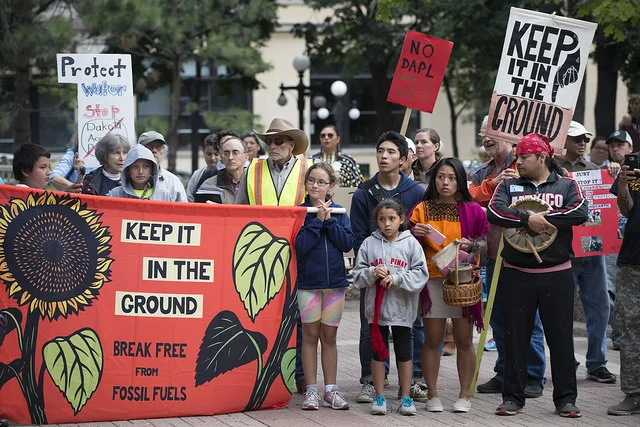The Dakota Access Pipeline project has grabbed the public’s attention due to concerns over its encroachment on sacred Native American land and its environmental impact. The proposed pipeline is 1,172 miles long and would span 50 counties in 4 states. Since April, the Standing Rock Sioux Tribe has been protesting the pipeline’s construction because they argue:
- They were not properly consulted in the initial stages of the project. This could violate a federal provision which states that federal agencies should consult Indian tribes in projects involving properties they attach religious and cultural significance to, regardless of the location of that property.
- The pipeline encroaches on sacred ground that contains the burial grounds of past ancestors among other important artefacts.
- In the event of an oil spill, their water supply through the Missouri River could be affected.
The ongoing protests have merged Native American and environmental interests.
So, how valid are the environmental concerns?
It is interesting to point out that initially, the pipeline was supposed to pass through Bismarck, North Dakota but was rerouted in part because of concerns about its effect on Bismarck’s water supply.
Additionally, as past experience shows, the Sioux and by extension, the Bismarck people, have a valid concern for the safety of their water supply* and protecting the existing ecosystem. Records show that from 2010 to 2015, the over 3,300 oil and natural gas leaks recorded in the United States injured 389 and killed 80 people and affected water supply. A landmark example is the 2010 spill in the Kalamazoo River in Michigan, which released 843,000 gallons of oil over 17 hours. The spill eventually closed down the river for two years and cost more than a billion dollars to clean, which ultimately affected water supply.
These past spills validate the Sioux Tribe’s concern about their water supply from the Missouri River, which is their only water source. Yet, Energy Transfer Partners, the pipeline operators, assert the pipeline poses no environmental threat.
On a larger scale, that large-scale fossil fuel projects still obtain federal approval speak to the clout of corporate interests and the premium placed on job creation and increased energy supply. It also undermines the efforts of the National Environmental Policy Act which outlines the need to incorporate the environmental costs into approving such projects.
In summary, the Dakota Access pipeline protests raise two important questions:
- How can America promote job creation and its energy independence yet prioritize the transition a cleaner, more sustainable energy economy?
- With widespread evidence of physical abuse of the protestors, when will the American government stop ignoring its responsibility to protect the land, culture, heritage and lives of the Native American people?
*June 2023 Update: This link is broken, and the article it linked to appears to have been taken down completely. Read a similar article here!




